Stanley Village -
Part 6 - A Bus To The Pit
w/e 31 December 2006
All
this week's pictures were taken with a Kodak DX6490

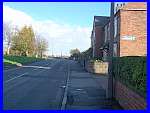 We
started our journey through Stanley Village at the south west
corner in July 2006 under clear blue skies and in warm sunshine.
Now as we approach the north eastern edge of the village we have
travelled not only through the village streets but also through
the seasons and this sixth part will see us reach the end of
our travels on a misty day in December under a featureless grey
sky. We will however refer back to some previous sites we have
already seen as we head off along Station Road picking up the
route at the end of New Street where we left off in Part 5. It
was in New Street that a certain Norman Frost set up his business. We
started our journey through Stanley Village at the south west
corner in July 2006 under clear blue skies and in warm sunshine.
Now as we approach the north eastern edge of the village we have
travelled not only through the village streets but also through
the seasons and this sixth part will see us reach the end of
our travels on a misty day in December under a featureless grey
sky. We will however refer back to some previous sites we have
already seen as we head off along Station Road picking up the
route at the end of New Street where we left off in Part 5. It
was in New Street that a certain Norman Frost set up his business.
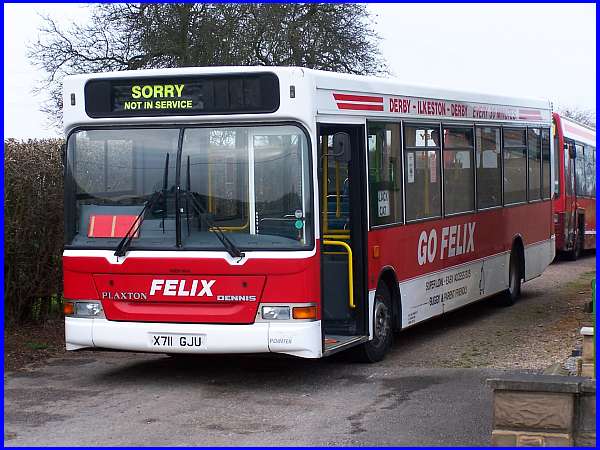
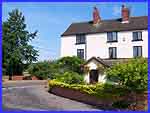 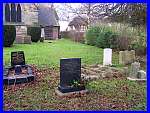 Mr Frost was born at the Bridge Inn
(see Part 1) and he became the pioneer of the local bus service
- Felix. Starting with a service into Ilkeston at weekends only
he soon developed a two-hourly service to Derby. Further expansion
necessitated a move from New Street to Station Road and it still
operates from there today. Mr Frost died in 1975 and is buried
at St Andrew's Church in the village (see Part 4). Mr Frost was born at the Bridge Inn
(see Part 1) and he became the pioneer of the local bus service
- Felix. Starting with a service into Ilkeston at weekends only
he soon developed a two-hourly service to Derby. Further expansion
necessitated a move from New Street to Station Road and it still
operates from there today. Mr Frost died in 1975 and is buried
at St Andrew's Church in the village (see Part 4).
|
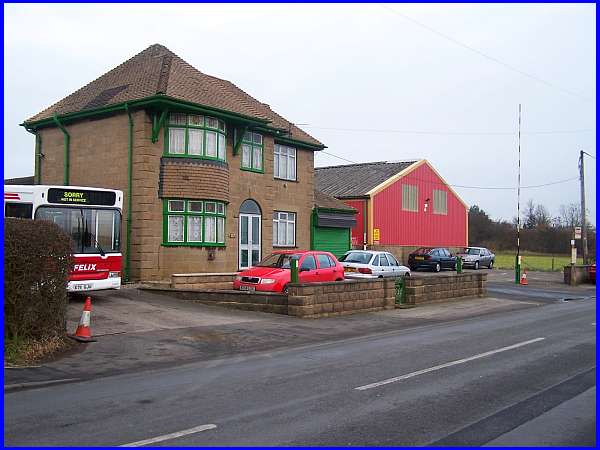
The move to Station Road took place in 1936 and both the house
and the garage were built using the "Stanley Building Block"
made from locally quarried sandstone by the Stanley Excelsior
Rubbing Stone Company (also mentioned in Part 1).
|

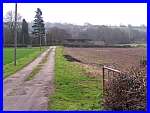 Almost
directly opposite the Felix Garage and accessed by this farm
track (right) is Stanley Grange Farm. The farm straddles the
boundary between the Stanley and Dale parishes although most
of it lies on the Stanley side. Zooming in on the farm below
shows its proximity to the Cat and Fiddle Mill, also known as
Dale Windmill which we saw previously in the series about Dale Abbey Village. In
that series we also saw Baldock Mill, a water-powered corn mill
which is situated in the same valley as the farm at the side
of Cat and Fiddle Lane and a little further to the left of the
view below. The water supply was taken from Stanley Brook. Almost
directly opposite the Felix Garage and accessed by this farm
track (right) is Stanley Grange Farm. The farm straddles the
boundary between the Stanley and Dale parishes although most
of it lies on the Stanley side. Zooming in on the farm below
shows its proximity to the Cat and Fiddle Mill, also known as
Dale Windmill which we saw previously in the series about Dale Abbey Village. In
that series we also saw Baldock Mill, a water-powered corn mill
which is situated in the same valley as the farm at the side
of Cat and Fiddle Lane and a little further to the left of the
view below. The water supply was taken from Stanley Brook.
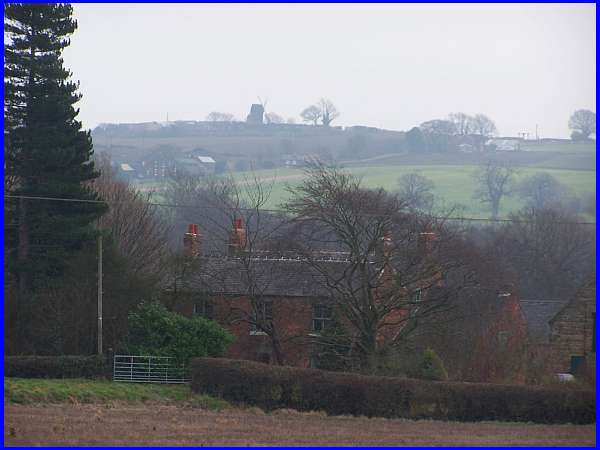
Stanley Grange Farm has developed on the site of a monastic farm
that belonged to the Abbey at Dale and remnants of earlier buildings
can still be found on the farm. In the seventeenth century the
Grange was for a time a Catholic School but suffered under the
religious persecution of the time. It was raided three times,
the second time in 1637 after questions had been asked about
it in the House of Commons and again in 1642 when a Parliamentary
Force searched for Royalist arms. The school eventually moved
to a "safer" place!
|
Our route now continues along Station Road to a "T"
junction. If we were to carry straight on along Cat and Fiddle
Lane we would pass the West Hallam Storage Depot and Baldock
Mill and climb the hill to the Cat and Fiddle Windmill. But our
route out of the village is to the left and over the old railway
bridge. From the bridge, we can see in the middle distance on
the right of the image below, the storage depot. The site was
developed during the Second World War as an ordnance depot with
a staff of about 100 and its own rail network and was at its
busiest in 1944 storing and preparing equipment prior to the
D-Day landings. In peace time it has continued as a storage place
and is now used by a number of different companies.
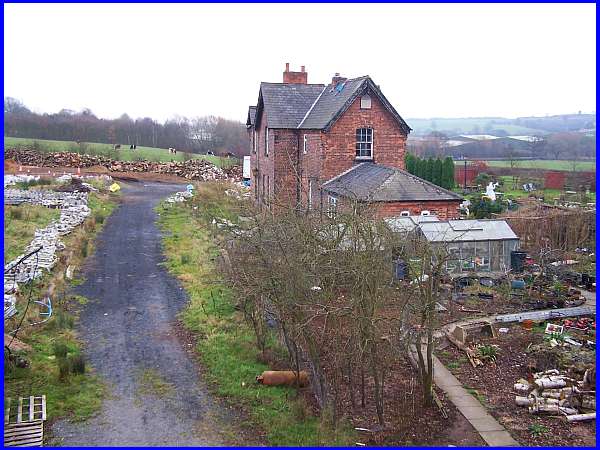
Apart from the bridge little else remains of the railway except
Station House which is now in use as a garden centre/nursery.
The Great Northern Railway (GNR) cut an east-west line through
Stanley in 1876/7 and the Stanley Station opened in 1878. Confusion
with another GNR station of the same name in Yorkshire soon resulted
in Derbyshire's station being renamed "West Hallam for Dale
Abbey". See here for more images of Station House captured
in 2002. It is difficult to believe given its present appearance
that at the start of the twentieth century, some 90,000 people
used the station each year.
|
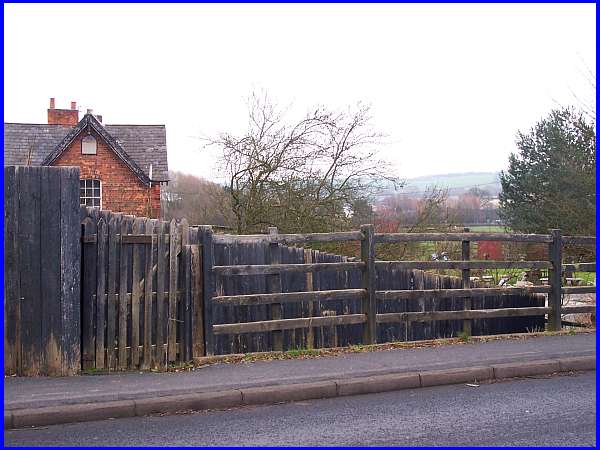
As well as passenger traffic, coal was of course an important
commodity that utilised the rail network and the farming community
also used the service. A daily milk train stopped to collect
churns that farmers unloaded at the "milk gate" at
the side of the road bridge. The line was closed in 1964 but
more than forty years later, the "milk gate" still
survives at the side of the bridge.
|
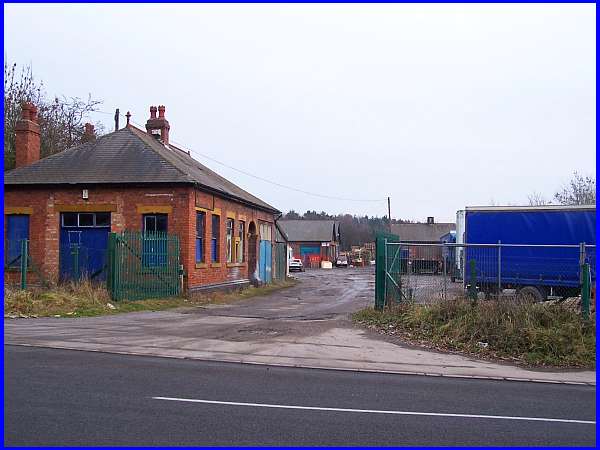
Much of the coal transported by the railway came from the adjacent
Stanley Colliery, one of many pits in this corner of Derbyshire
until its sad demise in the middle of the last century. Stanley
Colliery acquired a nickname of "Nibble 'em" or "Nibby".
The name arose due to cuts in the miners' wages in the early
days of mining and stuck throughout its life - and beyond as
even today people who remember the mine, still refer to it as
Nibby Pit. The main shaft was sunk in 1895 by the Mapperley Colliery
Company - the same company that donated the base for the War
Memorial (see Part 3). Discovery of an underground stream hindered
progress but the water was harnessed and produced some 300,000
gallons a day to supply the surrounding villages of Stanley,
Stanley Common, West Hallam and Smalley Common.
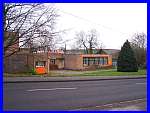 Deep mine working
continued through the first half of the twentieth century but
ceased in 1959. The drift mine closed two years later but at
its peak Nibby Pit had employed between six and seven hundred
men. Only a few years earlier in 1953, the new pit baths (right)
had been opened and when not being used by the colliery, they
were made available to the local community. The baths and some
other of the old colliery buildings (above) are still standing
but nowadays they are used by a number of alternative companies.
Like coal mining, this series about Stanley Village has now come
to an end but while the mining industry may be a thing of the
past, the camaraderie of the workforce is still fondly remembered
in the area. Deep mine working
continued through the first half of the twentieth century but
ceased in 1959. The drift mine closed two years later but at
its peak Nibby Pit had employed between six and seven hundred
men. Only a few years earlier in 1953, the new pit baths (right)
had been opened and when not being used by the colliery, they
were made available to the local community. The baths and some
other of the old colliery buildings (above) are still standing
but nowadays they are used by a number of alternative companies.
Like coal mining, this series about Stanley Village has now come
to an end but while the mining industry may be a thing of the
past, the camaraderie of the workforce is still fondly remembered
in the area.
|

